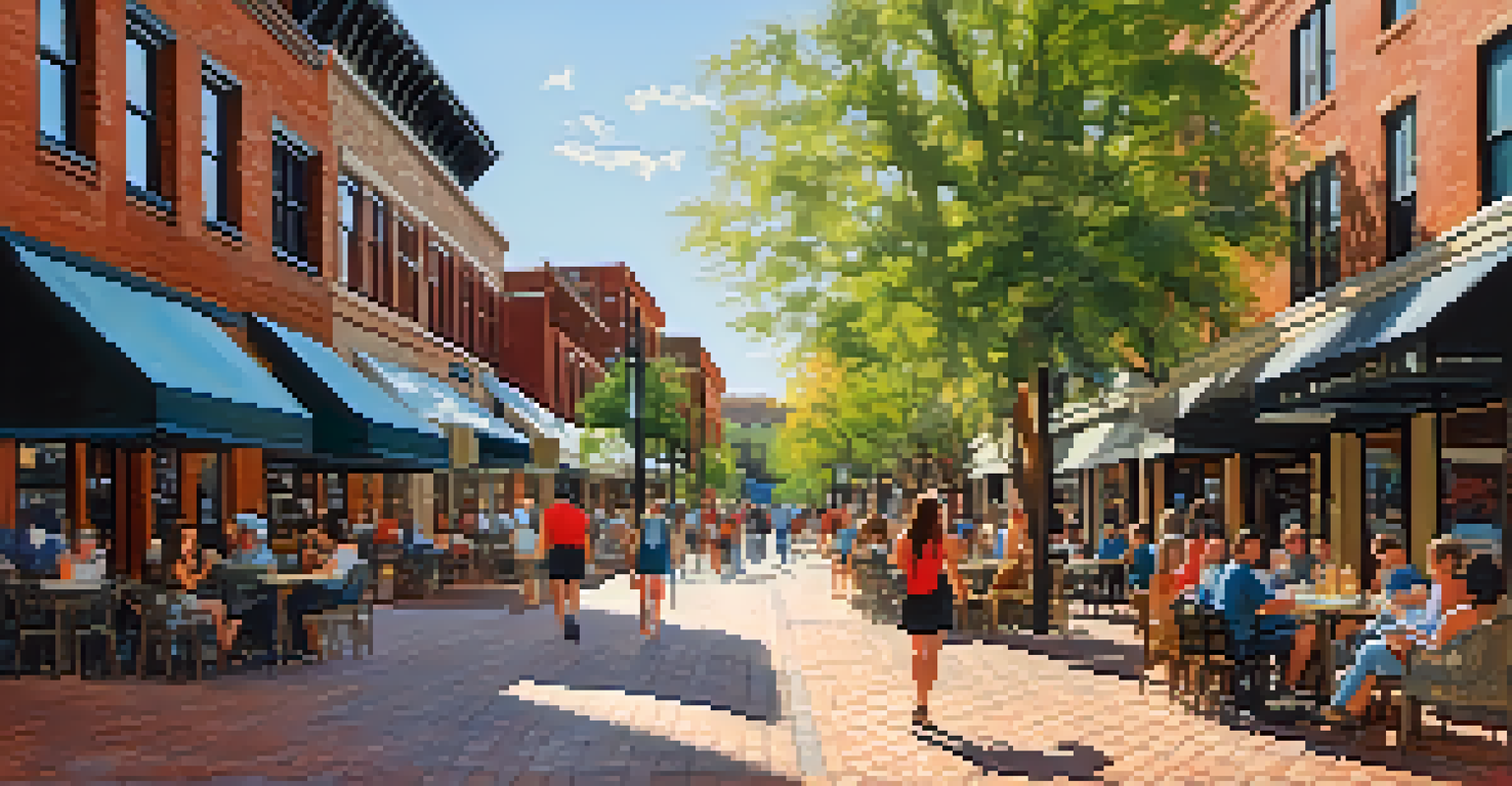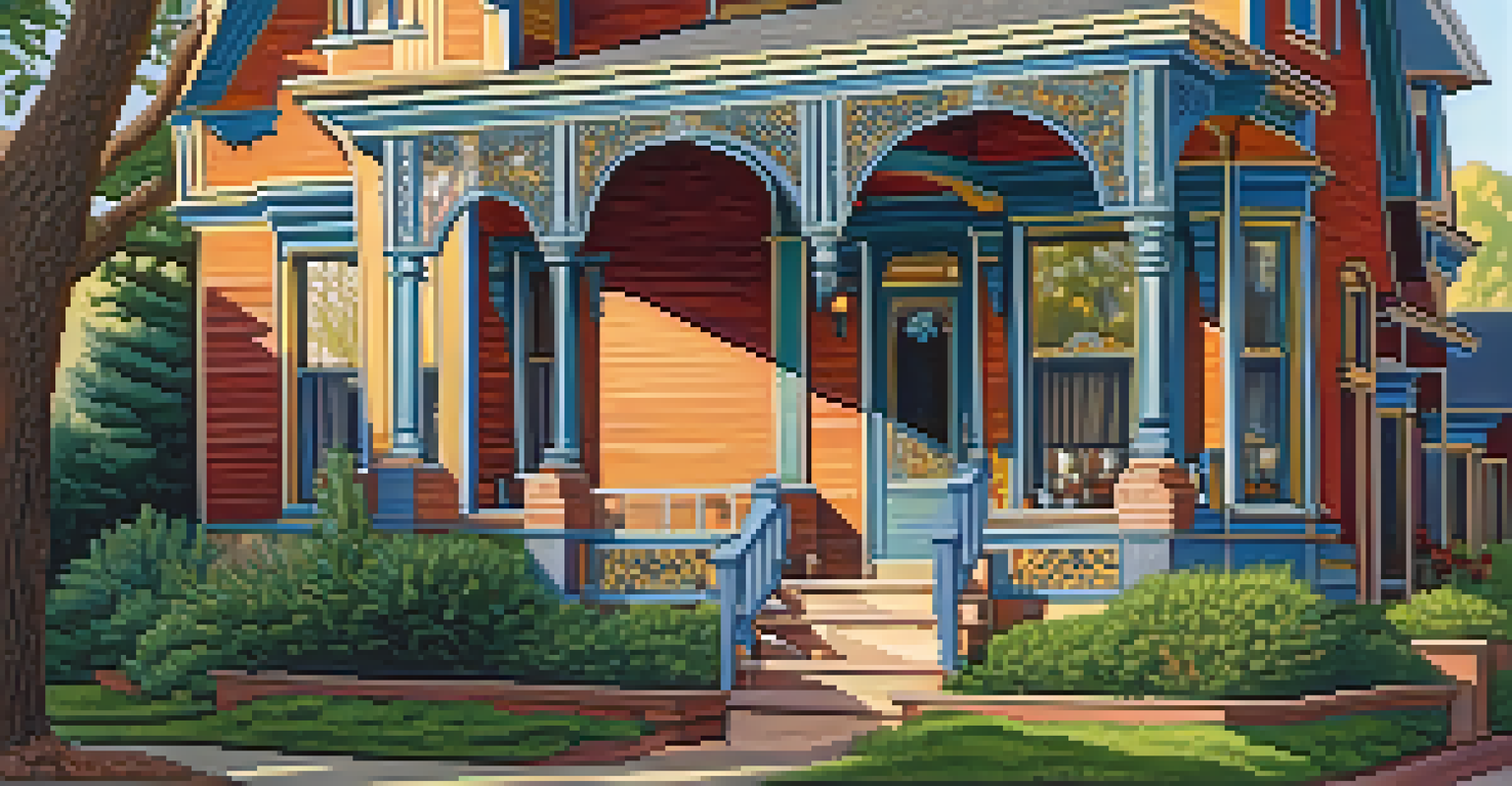Boulder’s Role in Protecting Historic Neighborhoods

Understanding Boulder's Historic Neighborhoods
Boulder is renowned for its stunning landscapes, but it's also rich in history. The city's historic neighborhoods showcase a blend of architectural styles that tell the story of its evolution. From charming Victorian homes to mid-century modern gems, these areas reflect the cultural fabric of the community.
Preservation is a form of empowerment. It bridges the past and the future, allowing communities to thrive through their rich histories.
Many of these neighborhoods are not just residential zones; they are living museums that capture the essence of Boulder’s past. They provide a unique glimpse into the lives of those who built the city, making it crucial to preserve these sites. Understanding their significance adds depth to the appreciation of Boulder’s character.
Moreover, historic neighborhoods contribute to Boulder's identity and attract visitors, enhancing local businesses. When we protect these areas, we not only honor our heritage but also promote economic vitality through tourism and community engagement.
The Role of Local Government in Preservation
Boulder's local government plays a pivotal role in preserving historic neighborhoods. Through zoning laws and preservation ordinances, the city ensures that any development respects the architectural integrity of these areas. This structured approach encourages responsible growth while safeguarding the historical essence.

Additionally, the city has established the Boulder Landmarks Board, which reviews applications for changes to historic properties. Their guidelines help maintain the character of these neighborhoods, preventing unsightly developments that could detract from their charm. The board also provides resources for homeowners to maintain and restore their properties authentically.
Importance of Historic Preservation
Boulder's historic neighborhoods are vital for cultural identity and economic vitality, attracting visitors while honoring the city's heritage.
By actively involving the community in these processes, Boulder fosters a sense of ownership among residents. This collaboration between government and citizens not only protects history but also nurtures a vibrant, engaged community that cherishes its roots.
Community Engagement and Advocacy
Community involvement is essential in Boulder's preservation efforts. Local organizations and advocacy groups play a crucial role in raising awareness about the importance of historic neighborhoods. They educate residents on the value of preservation and encourage participation in local initiatives.
Historic preservation is not just about saving buildings; it's about preserving the stories and the heritage of our communities.
Events like neighborhood tours and workshops foster appreciation for Boulder’s architectural history. These gatherings not only celebrate the past but also empower residents to take an active role in preservation efforts. When people understand the significance of their surroundings, they are more likely to advocate for their protection.
Moreover, successful preservation requires a collective voice. When the community unites to express its desire to maintain the character of their neighborhoods, it sends a powerful message to local leaders, influencing policy decisions and ensuring that historic sites are prioritized.
Challenges Faced in Preservation Efforts
While Boulder is dedicated to preserving its historic neighborhoods, challenges abound. One significant issue is the pressure of urban development. As the city grows, developers often seek to replace older structures with new ones that can accommodate modern needs, threatening the integrity of historic areas.
Another challenge is balancing modern living with preservation. Homeowners may wish to update their properties for energy efficiency or personal comfort, but these changes can conflict with preservation guidelines. Finding a compromise that respects historic character while allowing for necessary updates is a continual negotiation.
Community's Role in Preservation
Active community engagement and advocacy are essential for protecting Boulder’s historic neighborhoods, fostering a sense of ownership and collaboration.
Additionally, funding for preservation projects can be limited. While grants and assistance programs exist, they may not cover all expenses, leaving some homeowners struggling to maintain their historic properties. Addressing these challenges requires innovative solutions and a commitment from both the community and the government.
The Impact of Preservation on Local Economy
Preserving historic neighborhoods in Boulder does more than honor the past; it boosts the local economy. Historic districts are often attractive to tourists who seek authentic experiences, leading to increased foot traffic for local businesses. This tourism can provide a significant economic boost to the community.
Moreover, homes in historic neighborhoods often maintain higher property values compared to newer developments. Buyers are drawn to the charm and character of these areas, creating a stable market that benefits homeowners and the city alike. This economic stability can lead to increased investment in local infrastructure and services.
Additionally, preserving historical sites can lead to job creation in areas like restoration, tourism, and local arts. By investing in the preservation of these neighborhoods, Boulder not only protects its heritage but also fosters a thriving economy that benefits all residents.
Success Stories of Historic Preservation in Boulder
Boulder has several success stories that highlight the benefits of historic preservation. One notable example is the Chautauqua Park Historic District, which has maintained its natural beauty and architectural charm through careful management and community involvement. This area attracts visitors year-round, showcasing the city's commitment to preserving its heritage.
Another success is the revitalization of the Pearl Street Mall, which has become a vibrant hub while retaining its historic character. The careful blend of modern shops and historic buildings creates an inviting atmosphere, drawing both locals and tourists. This balance demonstrates how preservation can coexist with contemporary needs.
Challenges in Maintaining Heritage
Preservation efforts in Boulder face challenges such as urban development pressures and funding limitations, requiring innovative solutions for success.
These success stories serve as a model for future preservation efforts in Boulder and beyond. They illustrate that with thoughtful planning and community engagement, it is possible to protect historic neighborhoods while fostering growth and development.
Looking Ahead: Future of Boulder's Historic Neighborhoods
As Boulder continues to evolve, the future of its historic neighborhoods hinges on ongoing commitment and innovation. Planning for sustainable growth while respecting historical integrity will require collaboration among residents, government, and developers. Embracing new ideas while honoring the past is essential for future success.
The increasing awareness of climate change also presents an opportunity for integrating sustainability into preservation efforts. By finding ways to enhance energy efficiency in historic homes without compromising their character, Boulder can lead the way in sustainable preservation practices.

Ultimately, the future of Boulder's historic neighborhoods will depend on the collective will of the community. By valuing their history and working together, residents can ensure that future generations enjoy the rich tapestry of Boulder’s past while looking forward to a promising future.